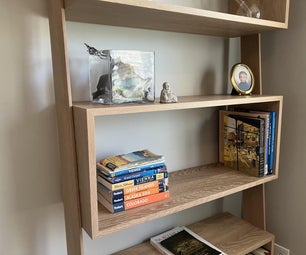Introduction: Broad Pallet Patio Furniture
Sustainable Blacksburg was holding a contest called Broadening the Pallet focusing on the idea of reuse of commercial pallets. We decided to build some furniture for our balcony out of the four pallets we collected as part of the contest.
Step 1: Design Your Furniture
While you could start working right away, we would suggest putting a little design work at the beginning to simplify the overall process. We decided on a hexagonal table with two matching stools. We spent a few evenings working out all the details beforehand to be sure we knew where we were headed.
Step 2: Disassemble the Pallets
After having a basic design completed, we started disassembly of the pallets. The method we used was cutting the slats off the stringers as the wood was prone to cracking if we tried prying the wood with the crowbar. By severing the connection at the two ends and then wiggling the center stringer off the board, we were able to minimize the damage to the boards and generate the maximum amount of usable wood using the tools on hand. Some of the boards did split, as can be seen in the picture above. The wood is quite brittle, so this is to be expected even if you are being careful.
Using a Sawzall to cut the nails would likely be more effective, and is suggested if you have the means. In either case, please wear safety glasses for this and all the other steps in this Instructable as the wood and nails have a tendency to do exciting things when being pried, cut, or sawed.
Using a Sawzall to cut the nails would likely be more effective, and is suggested if you have the means. In either case, please wear safety glasses for this and all the other steps in this Instructable as the wood and nails have a tendency to do exciting things when being pried, cut, or sawed.
Step 3: Cutting and Assembly
Having disassembled the pallets, it was then time to cut out our components and assemble them. We used a miter box to achieve the numerous 60 degree angles necessary for this hexagonal table. Once the pieces were cut, we used an electric sander to do both rough (80 grit) and fine (200 grit) sanding.
We used outdoor phillips-head screws to assemble the table. We first assembled the three supported sections of the tabletop as seen in the first figure below. These were attached to the central pillar, and the remainder of the tabletop was suspended between these three support sections. We could not support all six sides as the planters would interrupt any supports running from the central pillar on those sides where they reside. Two of the runners from a pallet were crossed in an 'X' pattern to be used as legs and attached at the bottom of the central support.
Step 4: The Chairs
I will be explaining the chair assembly here once I finish them completely. For now, I will say that it took one pallet of materials for each chair due to the need for sturdy legs.
Step 5: Finishing
Before staining, we filled all the holes left by the pallet nails using wood filler. We then laid out dropcloths in the house as it was too cold to stain outside. The light stain we used was a low VOC stain from Olympic, and we used an Olympic toner for the darker stain. The picture shows the planters being stained before the contest on our kitchen table.











